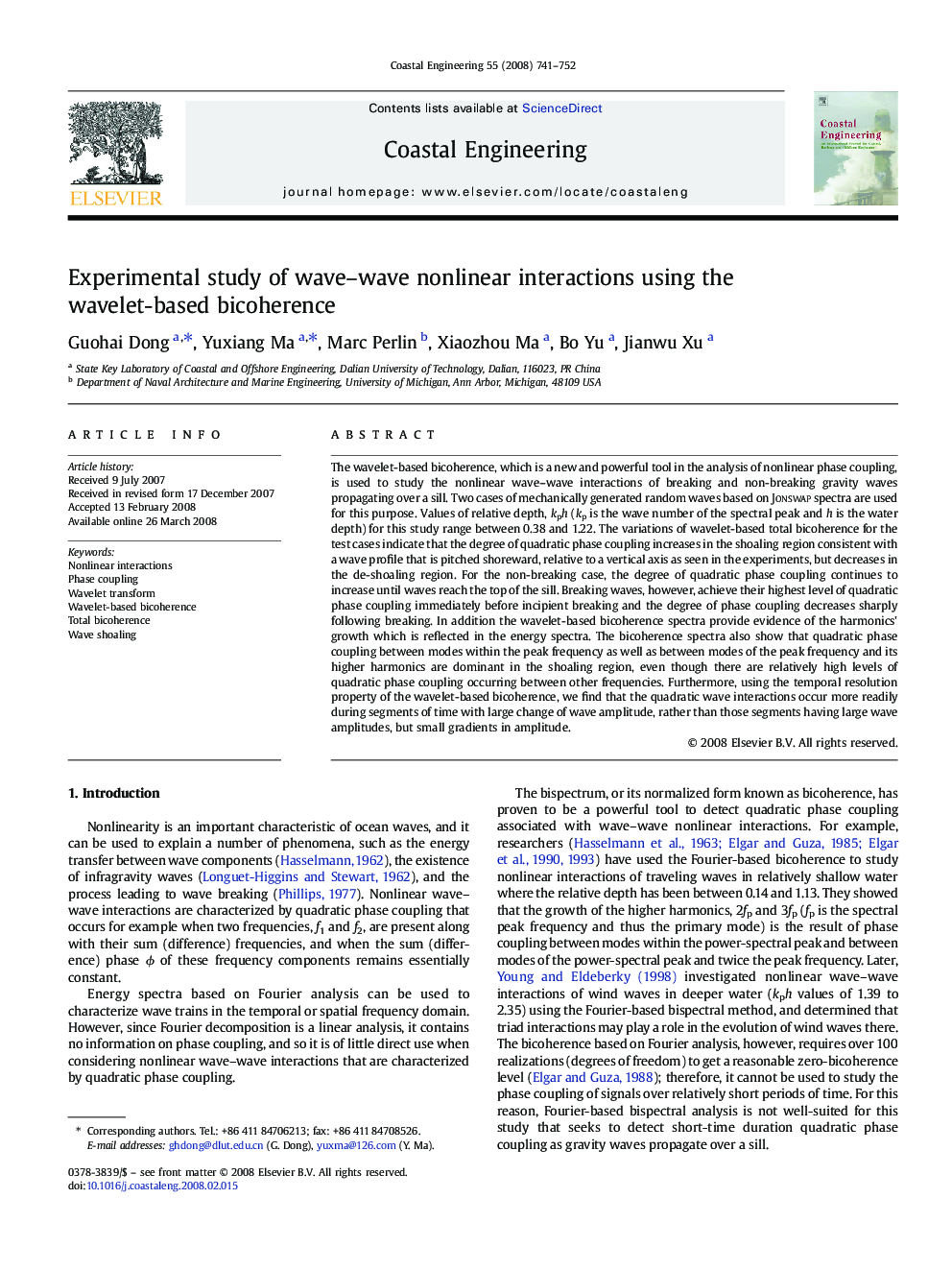| Article ID | Journal | Published Year | Pages | File Type |
|---|---|---|---|---|
| 1721484 | Coastal Engineering | 2008 | 12 Pages |
The wavelet-based bicoherence, which is a new and powerful tool in the analysis of nonlinear phase coupling, is used to study the nonlinear wave–wave interactions of breaking and non-breaking gravity waves propagating over a sill. Two cases of mechanically generated random waves based on Jonswap spectra are used for this purpose. Values of relative depth, kph (kp is the wave number of the spectral peak and h is the water depth) for this study range between 0.38 and 1.22. The variations of wavelet-based total bicoherence for the test cases indicate that the degree of quadratic phase coupling increases in the shoaling region consistent with a wave profile that is pitched shoreward, relative to a vertical axis as seen in the experiments, but decreases in the de-shoaling region. For the non-breaking case, the degree of quadratic phase coupling continues to increase until waves reach the top of the sill. Breaking waves, however, achieve their highest level of quadratic phase coupling immediately before incipient breaking and the degree of phase coupling decreases sharply following breaking. In addition the wavelet-based bicoherence spectra provide evidence of the harmonics' growth which is reflected in the energy spectra. The bicoherence spectra also show that quadratic phase coupling between modes within the peak frequency as well as between modes of the peak frequency and its higher harmonics are dominant in the shoaling region, even though there are relatively high levels of quadratic phase coupling occurring between other frequencies. Furthermore, using the temporal resolution property of the wavelet-based bicoherence, we find that the quadratic wave interactions occur more readily during segments of time with large change of wave amplitude, rather than those segments having large wave amplitudes, but small gradients in amplitude.
